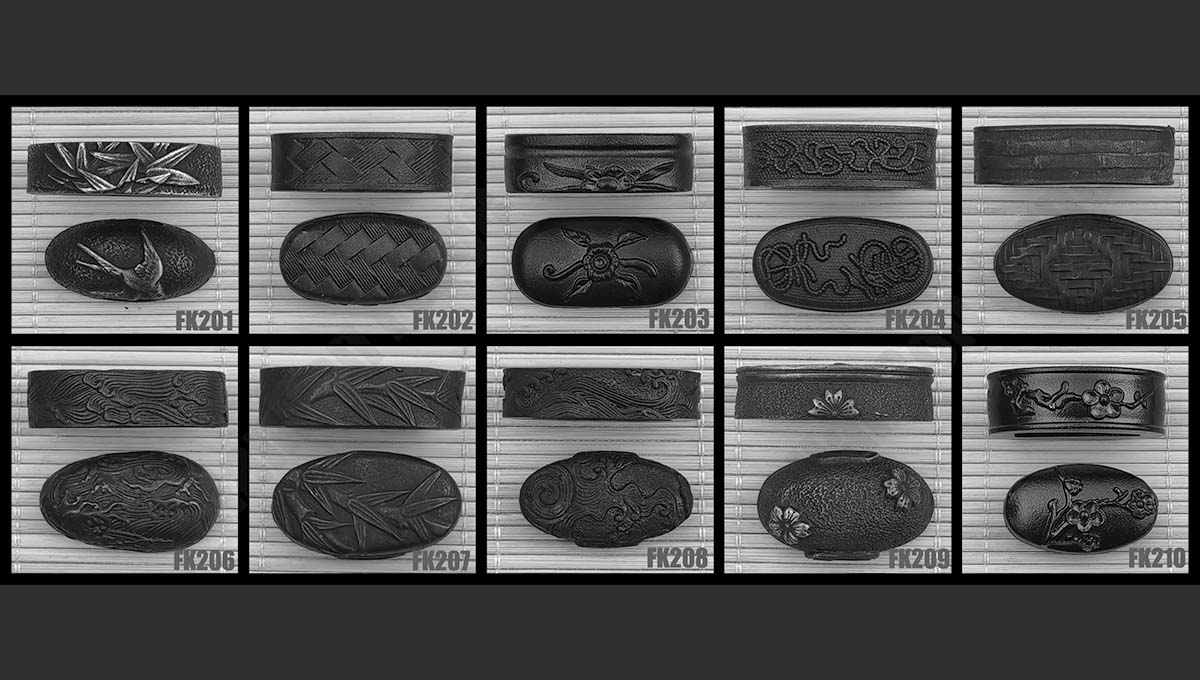The Intricate Accessories of the Samurai Sword: A Detailed Exploration

The Samurai sword, or Katana, is not merely a blade; it is a complex assembly of various components, each with its own name and purpose. Here’s an in-depth look at the primary accessories that accompany a Samurai sword:

- Tsuba: The guard of the sword, typically made from iron or another metal, serves to protect the hand from an opponent’s blade. It also helps to balance the sword’s weight. The Tsuba is often ornately designed, sometimes inlaid with gold or silver, reflecting the swordsmith’s artistic flair.
- Tsuka: The hilt of the sword is designed for a two-handed grip. It is wooden at its core and wrapped in ray skin (Samegawa), over which a cord made of silk, cotton, or leather (Tsuka-ito) is tightly bound. Beneath the wrapping, metal ornaments (Menuki) are often placed for both decoration and to provide a better grip.
- Saya: The scabbard of the sword is traditionally crafted from wood, lacquered, and sometimes intricately decorated. The mouth of the Saya features a reinforced rim known as the Koiguchi, which ensures the blade enters smoothly and is protected.
- Sageo: This cord attaches to the Saya, allowing the Samurai sword to be tied to the wearer’s belt (Obi). Its material and color can vary greatly, sometimes indicating the wearer’s status or personal taste.
- Habaki: A wedge-shaped metal piece that fits snugly at the base of the blade, the Habaki secures the blade within the Saya and prevents rattling.
- Menuki: Typically presented in pairs, these ornamental elements are embedded into the Tsuka’s sides and can range from animal and plant motifs to various symbolic designs.
- Kashira: The pommel or cap at the end of the Tsuka is often metallic and matches the Tsuba. It serves a decorative purpose and also helps to protect the end of the hilt.
- Blade: The blade of a Samurai sword is created through a meticulous process of folding and forging, a technique that yields a blade both resilient and sharp. The blade typically features a distinctive wavy line (Hamon), the result of differential hardening during the forging process.
- Hamon: This unique pattern on the blade is a result of the different cooling rates of the edge and the spine during tempering. Each Samurai sword’s Hamon is unique, akin to a fingerprint.
- Katana Kake: A stand for displaying the Samurai sword, it is not just a storage solution but also a means to showcase the sword’s craftsmanship and aesthetic appeal.

The creation and embellishment of these accessories are often highly sophisticated, reflecting the artistry and culture of the Samurai era. Each component serves a specific function and meaning, together forming a complete Samurai sword.


“Many people may find the ‘Tsuba’ (handguard) particularly interesting, as it is not only functional but often a focal point of craftsmanship and design on a samurai sword, showcasing exquisite artistry and traditional Japanese aesthetics.